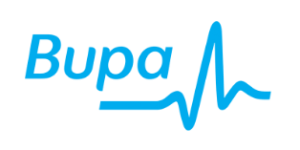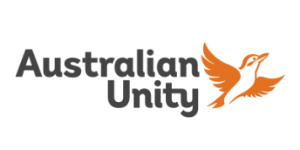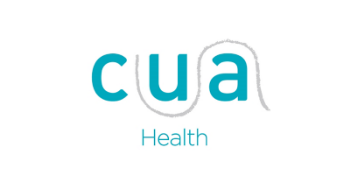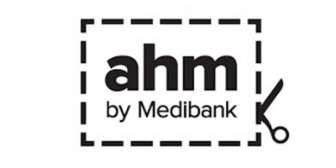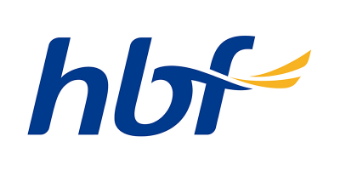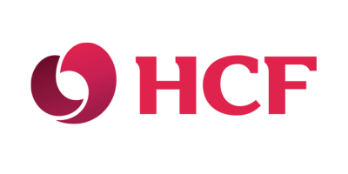Brisbane has great weather for sports and running – so we see a lot of Achilles tendinopathy at Sports Massage Brisbane (Knead Massage) – Achilles pain can resolve quickly with expert advice.
- The Achilles tendon (technically the calcaneal tendon) is a strong tendonous structure that attaches the calf muscles to the heel.
- The anchor point of the tendon pulls the heel off the ground (technically the calves pull) when performing gait related tasks such as walking, running, jumping, or tippy toes.
- An Achilles tendinopathy is an overuse condition – usually associated with new or infrequent activities – such as return to running or football after time off.
- The science is very clear. Special loading called eccentric loading has been proven to restore collagen health to irritable tendons.
- An effective pain management strategy for Achilles pain should include – eccentric loading to resolve the cause of the pain, manual therapy to reduce pain and muscular overload and improve function and education around the aggravating activity.
This article will discuss the common types of Achilles pain, what can cause Achilles pain and of course how to stop Achilles pain. Impatient for pain free running? Hit the book now button and we’ll help make pain a memory.
What can cause Achilles pain?
There are three general classifications for Achilles tendon irritation:
- Achilles Tendinitis describes a swollen inflamed tendon –without collagen damage to the tissue. An angry tendon if you will
- Achilles tendinosis describes a chronic condition (3 months or longer) where the collagen in the tendon has become damaged (the substance that makes the tendon). The pain is actually a sign of your body trying to heal damage, but in a disordered way – knitting without a plan leaving a rubbery thickened, hard feeling tendon.
- Achilles tendinopathy describes loss of collagen in the tendon, leaving a swiss cheese type appearance on ultrasound. The remaining collagen is usually very strong – despite pain.
In recent years all tendon irritations tend to be referred to as tendinopathy – as the way to load them and reduce pain is exactly the same.
How does Achilles tendinopathy occur?
Tendinopathies most frequently occur as a result of performing a task you are not accustomed to (too much too soon). The pain is often an inflammatory response to micro tears or repeated compression (which tendons aren’t well designed for). A tendonosis occurs when tears happen without inflammation as a result of collagen degeneration (hormonal change in the 40+ age group can change collagen into less robust forms).
Achilles tendinopathy is frequently caused by increasing running or jumping load too quickly (more than 10%/week increases), returning to sport after time off (new season or after a layoff for injury or life commitments), adding a new element to your training such as plyometric jumping, sprints or hill sprints or long hikes when you haven’t been hiking for a while.
There is research suggesting that high body mass individuals are more likely to suffer from Achilles tendinopathy.
Where is Achilles tendon pain?
Achilles tendon pain usually occurs in one of two locations:
- Insertional – when the irritation occurs at the junction of the tendon on the bone (also sometimes called an enthesopathy) – below the body of the tendon.
- Mid portion – where the pain and irritation occur in the ropey part above the bone (usually 1-2cm above the junction)
What does Achilles tendon pain feel like?
- Sore to touch
- Pain on the first few steps of the day or after lengthy sitting. Morning pain frequently occurs in all tendinopathies as the collagen receives very little circulation at rest and will be flooded with inflammatory substances until blood flow reduces their concentrations.
- the tendon warms up from walking or consistent running and pain temporarily decreases.
- Pain worsens after stopping an activity.
- Explosive activities such as sprinting, tennis, netball, soccer and basketball usually aggravate the pain.
Achilles Tendinopathy Brisbane -What to do for Achilles pain?
Progressive loading strategies are the scientifically validated how to fix Achilles pain method – particularly eccentric loading. Tendons need to adapt gradually to new load – especially when irritable (but also when healthy).
- Reduce or stop the aggravating activity.
- Consult with a Myotherapist or sports massage therapist to find the best loading solution to restore collagen health.
- Reduce muscular contribution to tendon irritation through soft tissue work such as sports massage, dry needling and low level laser.
- Stretch the calves daily.
- Maintain fitness by finding a cross training activity that improves blood flow without overloading the tendon – usually cycling, swimming or rowing machine.
- Some people find 20 minutes of ice pack post exercise reduces pain.
What shouldn’t you do for Achilles Pain?
- The science is VERY clear – cortisone is very bad for tendon health – symptoms may reduce for a few weeks after cortisone, but the condition will take a lot longer to resolve as cortisone changes collagen from a strong flexible form into a brittle less robust form (it ages the tendon).
- Do not stop exercise. Tendon health requires load within a range. Too much load creates overuse condition and not enough creates collagen deterioration. Pain may stop after a week of inactivity – until you run again. Find an appropriate loading strategy to restore tendon capacity. Your Myotherapist can guide you.
How long for Achilles tendinopathy to heal?
The great news is that recent onset Achilles pain can resolve in only a few weeks with expert treatment. Studies suggest that results can occur in as little as 2 weeks with optimum outcomes occurring by week 12 for more established Achilles pain. However if you’ve had symptoms for 12 months or more, it may take up to 6 months to resolve. Don’t waste money treating symptoms – treat the cause with appropriate loading.
How to fix Achilles pain?
- Learn how to load the tendon progressively and learn the correct eccentric loading strategy such as the alfredson heel drop protocol from a Myotherapist or qualified sports massage therapist.
- Reduce the offending activity, while finding alternative exercises such as cycling or swimming.
- Maintain physical capacity with cross training.
- Learn the best stretch for your anatomy to reduce calf tension and gently load the tendon.
- De-load the calf muscles with expert remedial massage or Myotherapy.
- Target the inflammatory response in the Achilles tendon disease with a combination low level laser and calf loading.
Frequently Asked Questions (FAQs)
The most common cause of Achilles pain when running is an irritation in the tendon called a tendinopathy – which frequently occur as a result of performing a task you are not accustomed to (too much too soon). The pain is often an inflammatory response to micro tears or repeated compression (which tendons aren’t well designed for). A tendonosis occurs when tears happen without inflammation as a result of collagen degeneration (hormonal change in the 40+ age group can change collagen into less robust forms).
Achilles tendinopathy is frequently caused by increasing running (often adding hll training) or jumping load too quickly (more than 10%/week increases), returning to sport after time off (new season or after a layoff for injury or life commitments), adding a new element to your training such as plyometric jumping, sprints or hill sprints or long hikes when you haven’t been hiking for a while.
The pain is often an inflammatory response to micro tears or repeated compression (which tendons aren’t well designed for). A tendonosis occurs when tears happen without inflammation as a result of collagen degeneration (hormonal change in the 40+ age group can change collagen into less robust forms).
Achilles pain when you first wake up is very common. Overnight, the tendon tends to shorten and tighten, so when you take your first steps it’s suddenly stretched, which can feel painful. This discomfort is often worse in the morning because of fluid build-up around the tendon and increased nerve sensitivity after a night of rest.
To help ease morning Achilles pain, you can try:
-
Gentle calf stretches before getting out of bed — moving the ankle up and down a few times helps warm up the tendon.
-
Wearing supportive shoes or cushioned slippers right away instead of walking barefoot.
-
Applying gentle heat (like a warm shower or heat pack) to relax the muscles and tendon.
-
Hands-on treatment from a Remedial Therapist or Myotherapist, who can use massage, laser, or needling to reduce irritation and improve tendon mobility.
-
Corrective strengthening — especially eccentric calf exercises — to build tendon resilience over time.
If morning pain is ongoing or getting worse, it’s a good idea to get assessed early to prevent the issue becoming chronic.
Achilles pain while walking is often a sign of Achilles tendinitis or tendinopathy — injuries that affect the tendon connecting your calf muscles to your heel bone. Common triggers include overuse from repetitive activity, wearing unsupportive footwear, or tight calf muscles that put extra strain on the tendon.
If you’re experiencing this pain, here are a few things that can help:
-
Rest and activity modification: Avoid pushing through pain. Swap high-impact activity for lower-impact options like cycling or swimming.
-
Gentle stretching: Calf stretches can reduce tension in the tendon.
-
Supportive footwear: Make sure shoes are well-fitted and cushioned to reduce stress on the tendon.
-
Hands-on treatment: A Remedial Therapist or Myotherapist can use techniques such as massage, laser therapy, or dry needling to reduce pain and improve mobility.
-
Corrective exercise: Gradual strengthening, especially eccentric calf loading, is one of the most effective long-term strategies for Achilles tendinopathy.
If your pain persists or worsens, it’s best to seek professional assessment early — addressing Achilles issues quickly prevents them from becoming a long-term injury.
The most common cause of Achilles pain when running is an irritation in the tendon called a tendinopathy – which frequently occur as a result of performing a task you are not accustomed to (too much too soon). The pain is often an inflammatory response to micro tears or repeated compression (which tendons aren’t well designed for). A tendonosis occurs when tears happen without inflammation as a result of collagen degeneration (hormonal change in the 40+ age group can change collagen into less robust forms).
Achilles tendinopathy is frequently caused by increasing running (often adding hll training) or jumping load too quickly (more than 10%/week increases), returning to sport after time off (new season or after a layoff for injury or life commitments), adding a new element to your training such as plyometric jumping, sprints or hill sprints or long hikes when you haven’t been hiking for a while.
The term insertional means that the irritation is close to the insertion of the tendon to the bone.
The pain is often an inflammatory response to micro tears or repeated compression (which tendons aren’t well designed for). A tendonosis occurs when tears happen without inflammation as a result of collagen degeneration (hormonal change in the 40+ age group can change collagen into less robust forms).
Achilles tendinopathy is frequently caused by increasing running (often adding hll training) or jumping load too quickly (more than 10%/week increases), returning to sport after time off (new season or after a layoff for injury or life commitments), adding a new element to your training such as plyometric jumping, sprints or hill sprints or long hikes when you haven’t been hiking for a while.
The most common cause of Achilles pain when running is an irritation in the tendon called a tendinopathy – which frequently occur as a result of performing a task you are not accustomed to (too much too soon). The pain is often an inflammatory response to micro tears or repeated compression (which tendons aren’t well designed for). A tendonosis occurs when tears happen without inflammation as a result of collagen degeneration (hormonal change in the 40+ age group can change collagen into less robust forms).
The most common cause of Achilles pain when running is an irritation in the tendon called a tendinopathy – which frequently occur as a result of performing a task you are not accustomed to (too much too soon). The pain is often an inflammatory response to micro tears or repeated compression (which tendons aren’t well designed for). A tendonosis occurs when tears happen without inflammation as a result of collagen degeneration (hormonal change in the 40+ age group can change collagen into less robust forms).
The most common cause of Achilles pain is an irritation in the tendon called a tendinopathy – which frequently occur as a result of performing a task you are not accustomed to (too much too soon) or overloading the tendon without sufficient rest. The dancing population tend to practice daily and tendon overload can occur.
The pain is often an inflammatory response to micro tears or repeated compression (which tendons aren’t well designed for). A tendonosis occurs when tears happen without inflammation as a result of collagen degeneration (hormonal change in the 40+ age group can change collagen into less robust forms).
The most common cause of Achilles pain when running is an irritation in the tendon called a tendinopathy – which frequently occur as a result of performing a task you are not accustomed to (too much too soon). The pain is often an inflammatory response to micro tears or repeated compression (which tendons aren’t well designed for). A tendonosis occurs when tears happen without inflammation as a result of collagen degeneration (hormonal change in the 40+ age group can change collagen into less robust forms).
Achilles tendinopathy is frequently caused by increasing running (often adding hll training) or jumping load too quickly (more than 10%/week increases), returning to sport after time off (new season or after a layoff for injury or life commitments), adding a new element to your training such as plyometric jumping, sprints or hill sprints or long hikes when you haven’t been hiking for a while.
Chronic Achilles tendinopathy often develops from poor load management. To heal, the tendon actually needs controlled use to rebuild and strengthen the damaged collagen. Many people mistakenly stop all activity, thinking rest alone will solve the problem. While a short rest may ease pain for a couple of weeks, symptoms usually return once normal activities like walking, jogging, or jumping resume.
Overuse of cortisone can make things worse by weakening tendon health. Although it may bring temporary relief, it often leads to further problems. The most effective long-term solution is correct load management, particularly through eccentric exercises.
Chronic Achilles tendinopathy is most often caused by poor load management. To repair and strengthen the tendon, it actually needs to be gradually loaded, which helps improve the quality of the damaged collagen. Many people make the mistake of stopping activity altogether, thinking rest will solve the problem. While a short rest period may reduce pain temporarily, symptoms almost always return once the tendon is stressed again by walking, jogging, or jumping.
Overuse of cortisone injections can also weaken the tendon further — they may offer short-term relief, but in the long run they create more issues. The most effective way to manage chronic Achilles tendinopathy is through carefully structured loading, especially eccentric exercises, which promote long-term healing and resilience.
A tendinopathy with calcification occurs when an irritable tendon has become chronic (ongoing – usually for calcification to occur 6 months or more). The calcification is the the damaged collagen of the tendon trying to adapt to overload by becoming stronger.
A tendinopathy with bone spur or calcification occurs when an irritable tendon has become chronic (ongoing – usually for calcification to occur 6 months or more). The calcification is the the damaged collagen of the tendon trying to adapt to overload by becoming stronger.
A tendon irritation may occur as a result of performing a task you are not accustomed to (too much too soon). The pain is often an inflammatory response to micro tears or repeated compression (which tendons aren’t well designed for). A tendonosis occurs when tears happen without inflammation as a result of collagen degeneration (hormonal change in the 40+ age group can change collagen into less robust forms). The bursitis is an inflammation in a structure called a bursar – which sits between the tendon and the bone to reduce inflammation. If the load is significant enough to irritate the tendon, the bursar is likely to be inflamed also.
Load management is the same for tendinitis and bursitis – eccentric loading. If you are getting cortisone – do not get it applied to the tendon – only the bursar. Cortisone destroys collagen integrity in tendons.
Most Achilles tendon irritations involve heel pain.
The pain is often an inflammatory response to micro tears or repeated compression (which tendons aren’t well designed for). A tendonosis occurs when tears happen without inflammation as a result of collagen degeneration (hormonal change in the 40+ age group can change collagen into less robust forms).
A secondary cause of heel pain that occurs in tandem with tendon irritation is called bursitis – an inflammation in a structure called a bursar – which sits between the tendon and the bone to reduce inflammation. If the load is significant enough to irritate the tendon, the bursar is likely to be inflamed also.
Load management is the same for tendinitis and bursitis – eccentric loading. If you are getting cortisone – do not get it applied to the tendon – only the bursar. Cortisone destroys collagen integrity in tendons.
Any pain in the knees after Achilles tendon pain is usually associated with altered gait mechanics (changing the way you walk) to avoid pain. Consult with a Myotherapist early for a solution to both of your pain states before chronicity.
A tendinopathy with calcification occurs when an irritable tendon has become chronic (ongoing – usually for calcification to occur 6 months or more). The calcification is the the damaged collagen of the tendon trying to adapt to overload by becoming stronger.
This is a common double whammy in both the extremely fit and high body mass individuals. Both conditions are overuse states and result from too much load too soon or too much load. Runners and change of direction sports such as soccer/football tend to develop this combination – often after returning to pre season training.
Heavier individuals that are on their feet for work often report this combination. The tendons are overloaded and possibly changing their quality as a result of hormonal change (usually 40 years plus).
Absolutely. An irritable tendon will cause the muscle to overwork to absorb load – resulting in spasm and irritation in the muscle itself.
Any pain in the knees after Achilles tendon pain is usually associated with altered gait mechanics (changing the way you walk) to avoid pain. Consult with a Myotherapist early for a solution to both of your pain states before chronicity.
Yes definitely! Progressive loading strategies are the scientifically validated how to fix Achilles pain method – particularly eccentric loading. Tendons need to adapt gradually to new load – especially when irritable (but also when healthy).
A tendinopathy is ultimately a change in the collagen health of the tendon. The best way to change collagen from less flexible painful collagen into healthier more robust collagen is through correct loading such as eccentric calf raises. It is however important to:
- Reduce or stop the aggravating activity.
- Consult with a Myotherapist or sports massage therapist to find the best loading solution to restore collagen health.
- Reduce muscular contribution to tendon irritation through soft tissue work such as sports massage, dry needling and low level laser.
- Stretch the calves daily.
- Maintain fitness by finding a cross training activity that improves blood flow without overloading the tendon – usually cycling, swimming or rowing machine.
It is extremely unlikely to have a tendinopathy so extreme that it does not respond to a suitable load strategy. Progressive loading strategies are the scientifically validated how to fix Achilles pain method – particularly eccentric loading. Tendons need to adapt gradually to new load – especially when irritable (but also when healthy).
A tendinopathy is ultimately a change in the collagen health of the tendon. The best way to change collagen from less flexible painful collagen into healthier more robust collagen is through correct loading such as eccentric calf raises. It is howeverimportant to:
- Reduce or stop the aggravating activity.
- Consult with a Myotherapist or sports massage therapist to find the best loading solution to restore collagen health.
- Reduce muscular contribution to tendon irritation through soft tissue work such as sports massage, dry needling and low level laser.
- Stretch the calves daily.
- Maintain fitness by finding a cross training activity that improves blood flow without overloading the tendon – usually cycling, swimming or rowing machine.
Any pain in the knees after Achilles tendon pain is usually associated with altered gait mechanics (changing the way you walk) to avoid pain. Consult with a Myotherapist early for a solution to both of your pain states before chronicity.
This is theoretically possible, but somewhat unusual. The most common cause of swelling in the calf region is related to hypertension and lymphatic flow. If you are unable to walk, the muscle pump mechanism that returns excess lymphatic fluid is compromised and unable to overcome gravity to return to thorax, where the lymphatic recepticles are situated.
Calf swelling can indicate hypertension and kidney dysfunction – so it is important to consult your GP if you have these symptoms.
Without performing an assessment on you – this question can’t be answered accurately. Current physiotherapy research indicates that some running (usually10-15% of usual load) may be tolerated every 3 days to maintain some cardiovascular health and load tolerance. Running without performing the correct eccentric loading is a recipe for increased pain and duration of symptoms.
Achilles tendinopathy is frequently caused by increasing running (often adding hll training) or jumping load too quickly (more than 10%/week increases), returning to sport after time off (new season or after a layoff for injury or life commitments), adding a new element to your training such as plyometric jumping, sprints or hill sprints or long hikes when you haven’t been hiking for a while.
As with any overload condition managing load should be the first consideration to reduce symptoms. If walking has caused the overload mechanism, it is likely that walking the same distance without modifying the terrain, footwear, distance, frequency or incorporating therapeutic exercises will elad to chronic tendinopathy which can become calcific – and unbearably painful.
Consult with a Myotherapist to find a pain relieving exercise that restores the damaged collagen into a more robust, less painful form.
Sciatica pain can refer to the foot and calf. Consult with a Myotherapist to find out if you have Achilles pain caused by sciatica, tendinopathy or both.
In theory, shoe choice can contribute to Achilles tendinopathy, but ultimately the pain is an inflammatory response to micro tears or repeated compression (which tendons aren’t well designed for). A tendonosis occurs when tears happen without inflammation as a result of collagen degeneration (hormonal change in the 40+ age group can change collagen into less robust forms).
The most common cause of Achilles tendinopathy occurs as a result of performing a task you are not accustomed to (too much too soon) or overloading the tendon without sufficient rest.
Without performing an assessment on you – this question can’t be answered accurately. Current physiotherapy research indicates that some running (usually10-15% of usual load) may be tolerated every 3 days to maintain some cardiovascular health and load tolerance. Running without performing the correct eccentric loading is a recipe for increased pain and duration of symptoms.
Achilles tendinopathy is frequently caused by increasing running (often adding hll training) or jumping load too quickly (more than 10%/week increases), returning to sport after time off (new season or after a layoff for injury or life commitments), adding a new element to your training such as plyometric jumping, sprints or hill sprints or long hikes when you haven’t been hiking for a while.
The pain is often an inflammatory response to micro tears or repeated compression (which tendons aren’t well designed for). A tendonosis occurs when tears happen without inflammation as a result of collagen degeneration (hormonal change in the 40+ age group can change collagen into less robust forms).
Load management is key to reducing pain and irritation in the collagen of the tendon. Eccentric loading has been scientifically shown to reduce tendon pain and improve collagen quality. It is important to keep walking within tolerance – as the tendon NEEDS load to maintain health.
The pain is often an inflammatory response to micro tears or repeated compression (which tendons aren’t well designed for). A tendonosis occurs when tears happen without inflammation as a result of collagen degeneration (hormonal change in the 40+ age group can change collagen into less robust forms).
The most common cause of Achilles pain when running is an irritation in the tendon called a tendinopathy – which frequently occur as a result of performing a task you are not accustomed to (too much too soon). The pain is often an inflammatory response to micro tears or repeated compression (which tendons aren’t well designed for). A tendonosis occurs when tears happen without inflammation as a result of collagen degeneration (hormonal change in the 40+ age group can change collagen into less robust forms).
Tendinopathy is usually diagnosed by your symptoms and onset. Another method is applying pain relieving exercises – if the exercises take your pain away it indicates tendinopathy. But ultimately if you or your clinician are unsure ultrasound or MRI are the imaging methods that best determine the presence of tendon irritation.
Recovery time depends on several factors — how long you’ve had symptoms, whether you’re avoiding the activities that aggravate your pain, if you’re working with an experienced clinician, and whether you’ve found a pain-relieving exercise that you’re doing consistently (at least five times a week). There’s no exact formula, but a useful guide is roughly one to two weeks of recovery for every month the tendon has been irritated.
Recovery times for Achilles tendinopathy vary a lot and depend on the severity of the condition and individual factors. Some people experience relief within a few weeks, while others — especially those with long-term or chronic tendon irritation — may take several months or even over a year to fully recover.
Key factors that affect healing include:
-
How long you’ve had symptoms — the longer the tendon has been irritated, the slower recovery tends to be.
-
Activity load — continuing high-impact activity without modification can delay progress.
-
Consistency of treatment — working with a Remedial Therapist or Myotherapist, and following a tailored exercise program (especially eccentric calf loading), greatly improves outcomes.
-
Age and overall health — older individuals or those with other medical conditions may need longer recovery times.
With the right combination of load management, corrective exercise, and hands-on treatment, most people can make a strong recovery and return to normal activity.
Progressive loading strategies are the scientifically validated how to fix Achilles pain method – particularly eccentric loading. Tendons need to adapt gradually to new load – especially when irritable (but also when healthy).
A tendinopathy is ultimately a change in the collagen health of the tendon. The best way to change collagen from less flexible painful collagen into healthier more robust collagen is through correct loading such as eccentric calf raises. It is howeverimportant to:
- Reduce or stop the aggravating activity.
- Consult with a Myotherapist or sports massage therapist to find the best loading solution to restore collagen health.
- Reduce muscular contribution to tendon irritation through soft tissue work such as sports massage, dry needling and low level laser.
- Stretch the calves daily.
- Maintain fitness by finding a cross training activity that improves blood flow without overloading the tendon – usually cycling, swimming or rowing machine.
To ease Achilles pain day-to-day, try stretching your calves regularly, using low-impact exercise like cycling or swimming to boost circulation, and working with a therapist to guide your recovery.
If you’re wondering how to fix Achilles pain or how to fix Achilles tendinopathy, the key is progressive loading—especially eccentric calf raises. Rest alone won’t solve it; the tendon needs the right kind of movement to rebuild healthy collagen. Working with a Myotherapist can help you find the safest loading plan, ease muscle tension with massage or dry needling, and guide you with stretches and cross-training to speed up recovery.
The most effective, evidence-based way to fix Achilles pain is through progressive loading strategies, especially eccentric loading. Tendons need to gradually adapt to new levels of stress, whether they’re irritated or healthy. Achilles tendinopathy is essentially a change in the quality of tendon collagen, and the goal is to shift it from stiff, painful tissue into stronger, healthier collagen. This is best achieved through correct loading, such as eccentric calf raises.
For best results, it’s important to:
-
Reduce or stop the activities that aggravate your tendon.
-
Book with a Myotherapist (or sports massage therapist) who can design a tailored loading plan to restore tendon health.
-
Relieve muscle tension that adds stress to the tendon with soft tissue therapies such as massage, dry needling, or low-level laser.
-
Stretch your calves daily to support flexibility.
-
Stay active with low-impact cross-training (like cycling, swimming, or rowing) to boost blood flow without overloading the tendon.
You can relieve Achilles pain by gently strengthening the tendon with eccentric calf raises, cutting back on activities that irritate it, and supporting recovery with treatments like massage or dry needling.
Progressive loading strategies are the scientifically validated how to fix Achilles pain method – particularly eccentric loading. Tendons need to adapt gradually to new load – especially when irritable (but also when healthy).
A tendinopathy is ultimately a change in the collagen health of the tendon. The best way to change collagen from less flexible painful collagen into healthier more robust collagen is through correct loading such as eccentric calf raises. It is however important to:
- Reduce or stop the aggravating activity.
- Consult with a Myotherapist or sports massage therapist to find the best loading solution to restore collagen health.
- Reduce muscular contribution to tendon irritation through soft tissue work such as sports massage, dry needling and low level laser.
- Stretch the calves daily.
- Maintain fitness by finding a cross training activity that improves blood flow without overloading the tendon – usually cycling, swimming or rowing machine.
The Achilles tendon connects your calf muscles to your heel and is heavily used during running. When overloaded, it can tighten, become irritated, and develop Achilles tendinitis. If left untreated, scar tissue may form and ongoing strain can even lead to a tear or rupture.
To stop Achilles pain, the first step is to stop running and avoid activities that aggravate the tendon. Focus on gentle calf stretches, strengthening, supportive footwear, and a gradual return to training. Seeing a physiotherapist or myotherapist can also help with hands-on treatment and corrective exercise to speed recovery and prevent recurrence.
The most effective, evidence-based way to fix Achilles pain is through progressive loading strategies, particularly eccentric calf loading. Tendons need to gradually adapt to stress — both when they’re irritated and even when healthy. Achilles tendinopathy is essentially a change in tendon collagen quality. The goal of treatment is to remodel this less flexible, painful collagen into stronger, healthier tissue, and the best way to achieve that is with structured loading, such as eccentric calf raises.
To support recovery, it’s also important to:
-
Reduce or stop aggravating activities that stress the tendon.
-
Consult a Myotherapist or sports massage therapist to guide safe loading and rehabilitation.
-
Relieve muscle tension with soft tissue therapies such as massage, dry needling, or low-level laser.
-
Stretch the calves daily to maintain flexibility.
-
Cross-train with low-impact activities like cycling, swimming, or rowing to stay fit while improving blood flow without overloading the tendon.
The most effective, evidence-based way to recover from Achilles pain is through progressive loading strategies, especially eccentric exercises. Tendons need to adapt gradually to stress, and this is true whether they’re irritated or healthy. Achilles tendinopathy occurs when the collagen within the tendon becomes weaker and less flexible. The best way to restore it into stronger, healthier tissue is with structured loading, such as eccentric calf raises.
For best results, it’s also important to:
-
Reduce or stop aggravating activities that continue to stress the tendon.
-
Work with a Myotherapist or sports massage therapist to find the right loading program for your recovery.
-
Relieve muscle tension using soft tissue therapies such as massage, dry needling, or low-level laser.
-
Stretch your calves daily to maintain mobility.
-
Cross-train with low-impact activities like cycling, swimming, or rowing to boost circulation without overloading the tendon.
It is extremely unlikely to have a tendinopathy so extreme that it does not respond to a suitable load strategy. Progressive loading strategies are the scientifically validated how to fix Achilles pain method – particularly eccentric loading. Tendons need to adapt gradually to new load – especially when irritable (but also when healthy).
A tendinopathy is ultimately a change in the collagen health of the tendon. The best way to change collagen from less flexible painful collagen into healthier more robust collagen is through correct loading such as eccentric calf raises. It is however important to:
- Reduce or stop the aggravating activity.
- Consult with a Myotherapist or sports massage therapist to find the best loading solution to restore collagen health.
- Reduce muscular contribution to tendon irritation through soft tissue work such as sports massage, dry needling and low level laser.
- Stretch the calves daily.
- Maintain fitness by finding a cross training activity that improves blood flow without overloading the tendon – usually cycling, swimming or rowing machine.
Achilles pain is never something to ignore. While mild soreness can sometimes follow heavy exercise or increased training, ongoing or sharp pain may be a sign of Achilles tendinopathy or a partial tear. If left untreated, tendon injuries often get worse and can lead to more serious problems, including a full rupture.
If your Achilles tendon hurts, it’s best to:
-
Rest and reduce aggravating activity (running, jumping, hill work).
-
Use supportive footwear to reduce strain.
-
Stretch and strengthen the calves to ease tightness.
-
See a physiotherapist or myotherapist, who can assess the cause, provide hands-on treatment, and prescribe corrective exercises.
Catching Achilles issues early makes recovery faster and lowers the risk of long-term damage.
The pain is often an inflammatory response to micro tears or repeated compression (which tendons aren’t well designed for) or a result of collagen degeneration (hormonal change in the 40+ age group can change collagen into less robust forms). The good news is that with the correct loading strategy (usually eccentric loading) the collagen quality can be improved resulting in reduction or elimination of pain.
Pain where the Achilles tendon joins the heel is often due to a condition called insertional Achilles tendinopathy. This occurs when the lower portion of the tendon, where it attaches to the heel bone, becomes irritated from overuse, tight calf muscles, or repetitive strain. It may also be aggravated by unsupportive footwear or activities like running and jumping.
Treatment usually involves load management, stretching and strengthening exercises, supportive shoes, and hands-on care from a physiotherapist or myotherapist. In some cases, imaging may be required to rule out other issues such as bursitis or heel spurs.
The pain is often an inflammatory response to micro tears or repeated compression (which tendons aren’t well designed for) or a result of collagen degeneration (hormonal change in the 40+ age group can change collagen into less robust forms). The good news is that with the correct loading strategy (usually eccentric loading) the collagen quality can be improved resulting in reduction or elimination of pain.
The most common cause of Achilles pain when running is an irritation in the tendon called a tendinopathy – which frequently occur as a result of performing a task you are not accustomed to (too much too soon). The pain is often an inflammatory response to micro tears or repeated compression (which tendons aren’t well designed for). A tendonosis occurs when tears happen without inflammation as a result of collagen degeneration (hormonal change in the 40+ age group can change collagen into less robust forms).
The pain is often an inflammatory response to micro tears or repeated compression (which tendons aren’t well designed for) or a result of collagen degeneration (hormonal change in the 40+ age group can change collagen into less robust forms). The good news is that with the correct loading strategy (usually eccentric loading) the collagen quality can be improved resulting in reduction or elimination of pain.
But pain can be referred to this area from nerve conditions such as sciatica.
Achilles pain is usually caused by Achilles tendinopathy, a condition from overuse or repetitive strain on the tendon. It can be triggered by sudden increases in activity, poor warm-up, or unsupportive shoes. Tight or weak calves, hard surfaces, and conditions like diabetes or arthritis may also contribute.
The most common cause of Achilles pain when running is Achilles tendinopathy, which occurs when the tendon becomes irritated from doing more than it’s used to — often described as “too much, too soon.” The pain is usually triggered by micro-tears in the tendon or by repeated compression, which tendons aren’t well designed to handle. In some cases, a tendinosis develops, where the tendon degenerates without inflammation. This is more common in people over 40, as hormonal changes can make collagen less resilient.
Achilles tendinopathy often develops when running or jumping loads are increased too quickly (typically more than 10% per week), after returning to sport following time off, or when adding new training stresses like plyometric jumps, sprints, hill repeats, or even long hikes after a break.
The most common cause of Achilles pain an irritation in the tendon called a tendinopathy – which frequently occur as a result of performing a task you are not accustomed to (too much too soon). The term insertional means that the irritation is close to the insertion of the tendon to the bone.
The pain is often an inflammatory response to micro tears or repeated compression (which tendons aren’t well designed for). A tendonosis occurs when tears happen without inflammation as a result of collagen degeneration (hormonal change in the 40+ age group can change collagen into less robust forms).
Achilles tendinopathy is frequently caused by increasing running (often adding hll training) or jumping load too quickly (more than 10%/week increases), returning to sport after time off (new season or after a layoff for injury or life commitments), adding a new element to your training such as plyometric jumping, sprints or hill sprints or long hikes when you haven’t been hiking for a while.
Achilles pain is most commonly caused by Achilles tendinopathy, which develops when the tendon is exposed to repetitive stress or overuse. It often follows a sudden spike in physical activity, insufficient warm-up, or wearing shoes without proper support.
Other contributing factors can include weak or tight calf muscles, running on hard surfaces, and underlying conditions such as arthritis or diabetes.
Most doctors are not experts at tendon management. A Myotherapist or physiotherapist should be the first clinician you consult as the majority of their patients are for musculoskeletal complaints such as tendinopathy – the most common cause of Achilles pain.
- Sore to touch
- Pain on the first few steps of the day or after lengthy sitting. Morning pain frequently occurs in all tendinopathies as the collagen receives very little circulation at rest and will be flooded with inflammatory substances until blood flow reduces their concentrations.
- the tendon warms up from walking or consistent running and pain temporarily decreases.
- Pain worsens after stopping an activity.
- Explosive activities such as sprinting, tennis, netball, soccer and basketball usually aggravate the pain.
- Sore to touch
- Pain on the first few steps of the day or after lengthy sitting. Morning pain frequently occurs in all tendinopathies as the collagen receives very little circulation at rest and will be flooded with inflammatory substances until blood flow reduces their concentrations.
- the tendon warms up from walking or consistent running and pain temporarily decreases.
- Pain worsens after stopping an activity.
- Explosive activities such as sprinting, tennis, netball, soccer and basketball usually aggravate the pain.
When your Achilles tendon hurts, it usually means the tendon is irritated or overloaded. This can cause stiffness, swelling, and tenderness, especially during activity or first thing in the morning. In many cases, the discomfort is felt as pain where the Achilles tendon meets heel, a common sign of tendinopathy. If ignored, the problem may worsen and increase the risk of a more serious injury, such as a partial tear.
Seeing a physiotherapist or myotherapist early can help identify the cause, relieve symptoms with hands-on treatment, and provide corrective exercises to restore tendon strength and function.
The most common cause of Achilles pain when running is an irritation in the tendon called a tendinopathy – which frequently occur as a result of performing a task you are not accustomed to (too much too soon). The pain is often an inflammatory response to micro tears or repeated compression (which tendons aren’t well designed for). A tendonosis occurs when tears happen without inflammation as a result of collagen degeneration (hormonal change in the 40+ age group can change collagen into less robust forms).
The peritendon is the part of the tendon that attaches directly to the bone. The collagen that blends into the bone is irritable. The same techniques used to relieve tendonopathy symptoms and improve collagen quality are applied to this type of Achilles pain also (eccentric calf loading).
A chronic Achilles tendinopathy is usually a result of incorrect load management.
The tendon needs to be used to improve the quality of the damaged collagen. Frequently people stop loading the tendon under the mistaken belief that resting the tendon will take pain away. Resting for a couple of weeks may temporarily reduce symptoms, but they return quickly when the tendon is stressed by activities such as walking, jogging or jumping.
Excessive use of cortisone can also further deteriorate tendon health. Cortisone may provide a few weeks relief, but it actually creates more problems for the tendon. Correct load management (eccentric) is the best way to resolve chronic Achilles tendinopathy.
Initial treatment for Achilles pain often involves rest, ice, and simple pain relief medications. Seeing a Myotherapist or Physiotherapist is important, as they can provide hands-on treatment and guide you through specific exercises to strengthen and stretch the calf muscles and Achilles tendon. Supportive measures such as orthotics or heel lifts can help reduce strain, and in more persistent cases, advanced options like shockwave therapy or, in rare situations, surgery may be considered.
The term insertional means that the tendon irritation is close to the insertion of the tendon to the bone.
The pain is often an inflammatory response to micro tears or repeated compression (which tendons aren’t well designed for). A tendonosis occurs when tears happen without inflammation as a result of collagen degeneration (hormonal change in the 40+ age group can change collagen into less robust forms).
Achilles tendinopathy is frequently caused by increasing running (often adding hll training) or jumping load too quickly (more than 10%/week increases), returning to sport after time off (new season or after a layoff for injury or life commitments), adding a new element to your training such as plyometric jumping, sprints or hill sprints or long hikes when you haven’t been hiking for a while.
If you’re wondering what to do for Achilles pain, the first step is to stop or reduce the activities that aggravate it, such as running or jumping. Apply ice to manage irritation, wear supportive footwear, and start with gentle calf stretches. Seeing a Myotherapist or Physiotherapist is important — they can provide hands-on treatment, guide you through progressive loading exercises like eccentric calf raises, and recommend supportive options such as orthotics or heel lifts. In more stubborn cases, advanced therapies like shockwave treatment may be considered.
Achilles pain is usually located at the back of the ankle or just above the heel, where the tendon joins the calf muscles to the heel bone. It often feels tender, swollen, or stiff in this area, and the pain can vary from a mild ache to sharp discomfort, especially during activity or on waking in the morning.
Achilles pain is usually felt at the back of the ankle or heel and may be accompanied by stiffness, swelling, and tenderness. The discomfort can range from a dull ache to a sharp, shooting pain, and it often feels worse during activity or with those first steps in the morning.
Achilles pain is typically felt at the back of the ankle and just above the heel, where the tendon connects the calf muscles to the heel bone. It may also come with stiffness, swelling, or tenderness, and the discomfort can range from a dull ache to sharp pain, often worse with activity or first thing in the morning.
Achilles tendon pain usually occurs in one of two locations:
- Insertional – when the irritation occurs at the junction of the tendon on the bone (also sometimes called an enthesopathy) – below the body of the tendon.
- Mid portion – where the pain and irritation occur in the ropey part above the bone (usually 1-2cm above the junction)
If you’re experiencing Achilles pain, a physiotherapist or myotherapist is the best place to start. They specialise in treating musculoskeletal conditions, and since tendinopathy is the most common cause of Achilles pain, it’s something they see often. With assessment, hands-on treatment, and tailored exercises, they can help you recover more effectively and prevent the pain from returning.
A physiotherapist or myotherapist is usually the best first step if you’re dealing with Achilles pain. These clinicians specialise in musculoskeletal conditions, and tendinopathy — the most common cause of Achilles pain — is something they treat regularly. They can assess the underlying cause, provide hands-on treatment, and guide you with the right exercises to support recovery.
A Myotherapist or physiotherapist should be the first clinician you consult as the majority of their patients are for musculoskeletal complaints such as tendinopathy – the most common cause of Achilles pain.
The most common cause of Achilles pain when running is an irritation in the tendon called a tendinopathy – which frequently occur as a result of performing a task you are not accustomed to (too much too soon). The pain is often an inflammatory response to micro tears or repeated compression (which tendons aren’t well designed for). A tendonosis occurs when tears happen without inflammation as a result of collagen degeneration (hormonal change in the 40+ age group can change collagen into less robust forms).
The most common cause of Achilles pain when running is an irritation in the tendon called a tendinopathy – which frequently occur as a result of performing a task you are not accustomed to (too much too soon). The pain is often an inflammatory response to micro tears or repeated compression (which tendons aren’t well designed for). A tendonosis occurs when tears happen without inflammation as a result of collagen degeneration (hormonal change in the 40+ age group can change collagen into less robust forms).
Achilles pain is most commonly linked to Achilles tendinitis or tendinopathy, which often develop from overuse, sudden spikes in activity, or poor footwear and training habits. Other factors that can contribute include tight calf muscles, exercising on hard surfaces, and in some cases underlying medical conditions or certain medications.
Related Posts
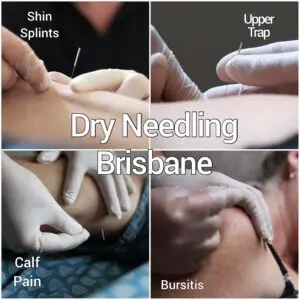
Dry Needling Brisbane

Calf Pain Running
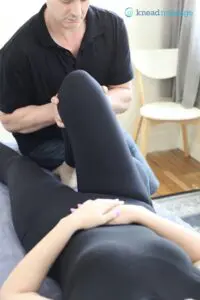
Knee Cap Pain Brisbane
https://www.ncbi.nlm.nih.gov/pmc/articles/PMC2658946/
https://www.ncbi.nlm.nih.gov/pmc/articles/PMC2465314/
https://research-information.bris.ac.uk/ws/portalfiles/portal/246237486/bjsports_2019_101872.full.pdf
https://www.ncbi.nlm.nih.gov/pmc/articles/PMC5867427/
https://www.ncbi.nlm.nih.gov/pmc/articles/PMC6769280/
https://journals.sagepub.com/doi/full/10.1177/2325967119834284
https://www.sspc.com.au/wp-content/uploads/2020/09/Murphy-2018-Rate-of-improvement-of-pain-and-fun.pdf

Roger Morelli


Latest posts by Roger Morelli (see all)
- Lymphatic Drainage Facial Massage Brisbane - August 13th, 2025
- Lymphatic Drainage Massage Benefits - October 18th, 2024
- Lymphatic Compression Pump Therapy Brisbane - October 16th, 2024


